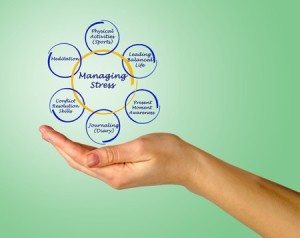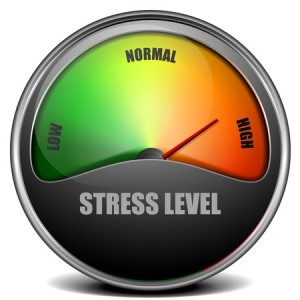Managing Stress in Recovery
People in recovery are particularly vulnerable to stress. In Using Stress Management in Relapse Prevention Therapy (RPT), Terence Gorski pointed out that effective stress management was not only critical for avoiding a resumption of drinking or drugging in the first two weeks of abstinence, but it was also important for individuals in recovery “to learn how to recognize their stress levels and use immediate relaxation techniques to lower their stress.” Regular, heavy use of alcohol and drugs will likely have toxic effects on the brain, and in turn will create symptoms that cause stress and interfere with effective stress management.
The role of stress sensitivity in addiction and relapse has received a well-deserved amount of attention in the professional literature. Another article here, “Stress Sensitivity in Addiction and Relapse,” looked at some of the findings of Mary Jeanne Kreek and George Koob on the topic. A third researcher who has done extensive research into stress and its influence on addiction is Rajita Sinha of the Yale School of Medicine. You can watch her lecture on: “Clinical Neurobiology of Stress and Addiction” on YouTube. You can also read a couple of her published articles, “New Findings on Biological Factors Predicting Addiction Relapse Vulnerability” and “Chronic Stress, Drug Use, and Vulnerability to Addiction.”
In her “New Findings” article, Sinha presented data that demonstrated high drug cravings are related to both stress and drug cues in addicted individuals when they are compared to social drinkers. The research findings indicate: “that alterations in physiological stress responses are associated with high levels of stress-induced and cue-induced craving and distress states.” These alterations were marked by increased emotional stress, heightened craving in abstinent addicted individuals compared to social drinkers. Refer to Figure 2 in the article for a chart comparing the findings. Sinha also noted a series of stressors that are associated with addiction vulnerability—the risk of developing an addiction and the risk of relapse. Table 1 in her article summarizes the types of life events chronic stressors, etc. associated with addiction risk.
The types of adverse events significantly associated with addiction vulnerability were parental divorce or conflict, abandonment, forced to live apart from parents, loss of child by death or removal, unfaithfulness of significant other, loss of home to natural disaster, death of a close one, emotional abuse or neglect, sexual abuse, rape, physical abuse by parent, caretaker, family member, spouse, or significant other, victim of gun shooting or other violent acts, and observing violent victimization. These represent highly stressful and emotionally distressing events, which are typically uncontrollable and unpredictable in nature.
An early recovery issue common to both alcoholics and addicts is Post Acute Withdrawal (PAW). Gorski described PAW as “a bio-psychosocial syndrome that results from the combination of brain dysfunction caused by alcohol and drug use and the stress of coping with life without drugs or alcohol.” PAW disrupts the person’s ability to think clearly, to manage feelings and emotions, as well as to manage stress and self-regulate behavior.
Stress negatively effects brain function in early recovery. As the level of stress goes up, the severity of PAW symptoms increase. And as PAW symptoms get worse, individuals in recovery begin to lose their ability to effectively manage stress. The result is that they are in regular, constant states of high stress that bounces them back-and-forth between emotional numbness and emotional overreaction. High stress then becomes linked with cravings because during active drug use, the addict or alcoholic self-medicates with alcohol or drugs. “So one of the first steps in managing craving is to learn how to relax and lower stress without using alcohol or other drugs.”
The severity of PAW depends upon the severity of brain dysfunction caused by addiction and the amount of stress experienced in recovery. It’s not practical to remove yourself from all stressful situations, so you need to develop ways to handle stress when it occurs. “It is not the situation that causes stress; it is your reaction to the situation.” Gorski then proceeds to describe a simple tool to monitor stress called the Stress Thermometer. Then he described an immediate relaxation technique called Relaxed Breathing to help you noticeably lower your stress in two or three minutes.
In his Relapse Prevention Therapy Workbook, Gorski said the goal is to keep your stress level in the functional range of the Stress Thermometer, between 4 and 6. If your stress drops below a 4, your mind will wander and you won’t be able to stay focused. If your stress level gets to above 6, you will begin to lose focus; then become driven and defensive. “The higher your stress level goes the more problems you will experience.” If your stress level reaches 9 or higher, you may start to use automatic survival defenses such as fight (getting angry, belligerent, or violent), flight (mentally checking out or leaving; not returning), or freezing (becoming compliant; becoming immobilized in whatever situation you find yourself).
Look at his article linked above for a detailed description of the Stress Thermometer. You can also find a graphic rendition of it in another one of his articles, “Stress Self-Monitoring and Relapse.” Gorski commented that when measuring your personal stress, you’ll notice that it is a combination of three things: the intensity of the stressor, your ability to cope with or handle the stressor and your level of awareness while you are experiencing the stress. He added that it was possible to score yourself very low on the stress thermometer even when your stress is quite high.
This happens because you are distracted and involved in something else, like managing the crisis causing your stress. Or because your stress is so high, you are emotionally numb and don’t realize what you are feeling. Another possibility is that you have lived with such high stress for such a long time that you consider it normal. A final possibility is that you have trained yourself to ignore your stress.
The first step in learning to manage your stress is to learn how to recognize and evaluate your stress level through body awareness. Then you learn how to quickly get back to a low stress level by using the Relaxed Breathing Technique. Again, turn to Terry’s description monitoring your stress through body awareness and reducing your stress through Relaxed Breathing in the above linked article.
I have read and used Terence Gorski’s material on relapse and recovery for most of my career as an addictions counselor. I’ve read several of his books and booklets; and I’ve completed many of his online training courses. He has a blog, Terry Gorski’s Blog, where he graciously shares much of what he has learned, researched and written over the years. This is one of a series of articles based upon the material available on his blog and website.


